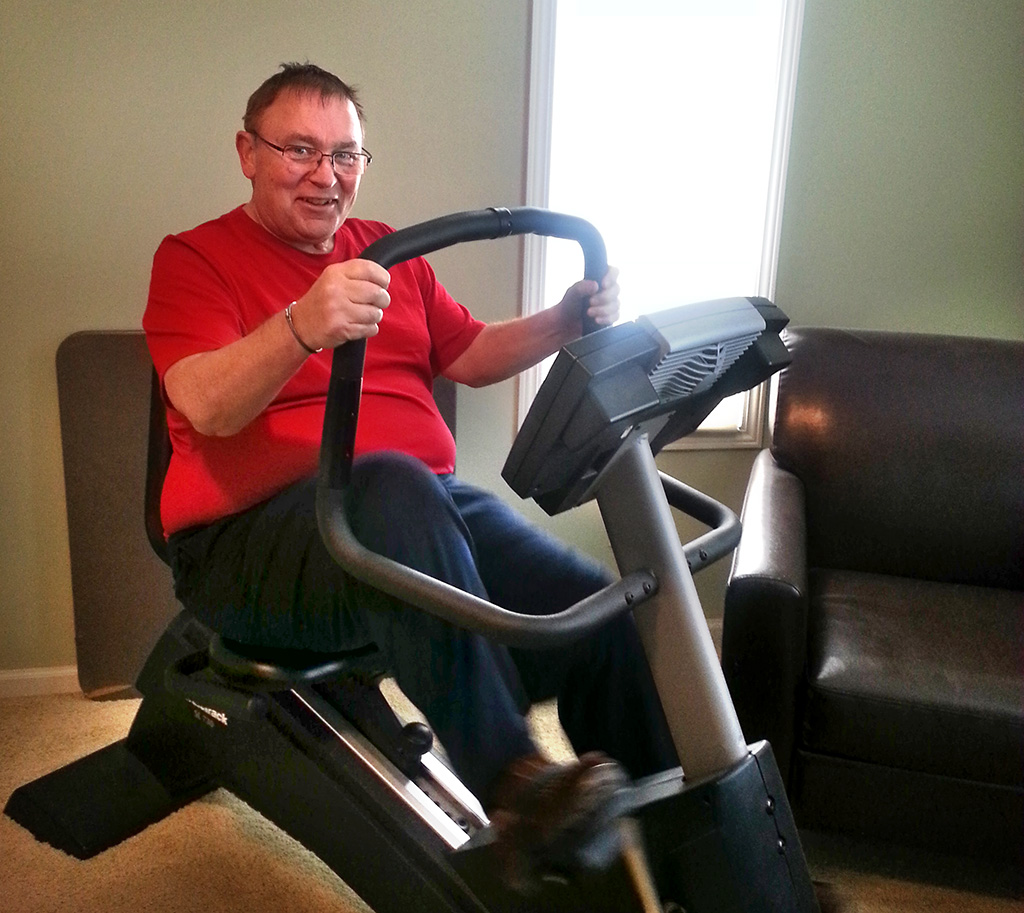
Stephen Schaefer thinks he’s a great fit for the next James Bond movie. Not as the leading man. Instead he’ll be a bartender who concocts the perfect martini.
Shaken, not stirred. It’s the tremors in his right hand that suit him for the role, he jokes.
Schaefer, who lives in Schoolcraft, Michigan, was diagnosed with Parkinson’s disease a few years ago, but he’s been able to keep his sense of humor intact.
And he’s also working to keep his symptoms under control with a regular exercise regimen that ranges from walking and using a stationary bike to shooting baskets and playing racquetball.
He’s following doctor’s orders.
His doctor is R. Ross Coleman, MD, a Spectrum Health Parkinson’s specialist who encourages all his patients to exercise at least 30 minutes a day, five days a week, to fight the tremors, slowness, stiffness or imbalance of Parkinson’s.
Research indicates that exercise may even slow down the progression of Parkinson’s, a disease of the nervous system that affects nearly one million people in the United States.
“Exercise is incredibly important for patients with Parkinson’s,” Dr. Coleman said. “We have good evidence that it can help things like walking speed, stride length and balance.”
Why? It improves cardiovascular strength. It improves overall well-being. It fights against insomnia. And it reduces constipation, a common problem for patients.
I have a walker that’s specially designed for Parkinson’s patients, but for now it’s hanging in my basement.
What kind of exercise? Anything they enjoy—because that means they’ll stick with it.
“I usually recommend exercise that is aerobic and includes stretching and resistance training,” Dr. Coleman said. “That could include Pilates, the tango or other ballroom dancing, yoga or tai chi. In fact, one study showed that tai chi can decrease the risk of falls by 60 percent.”
Some patients see improvement with non-contact boxing, using an approach that was featured on television’s 60 Minutes last year. If balance and safety are concerns, a recumbent stationary bike or water aerobics may be a good choice.
A physical therapist can help patients get started. Dr. Coleman often suggests Lee Silverman Voice Treatment therapy, a physical therapy method designed specifically for Parkinson’s patients.
Schaefer, a retired public school employee who stays busy evaluating student teachers, is reaping the benefits.
“One thing Parkinson’s patients tend to do is to walk hunched over and not swing their arms,” he said. “But after exercising, my doctor noticed that I was swinging my arms automatically. I wasn’t even thinking about it.”
Although he has faced several health obstacles including rheumatoid arthritis, two Achilles tendon ruptures and a bout with prostate cancer, Schaefer sees the benefits of both exercising at home and participating in classes offered locally in conjunction with the Michigan Parkinson’s Association.
“Exercise has made a difference. Before, I would get tired very quickly. Now I can go on a little longer,” Schaefer said. “I have a walker that’s specially designed for Parkinson’s patients, but for now it’s hanging in my basement.”
 /a>
/a>
 /a>
/a>
 /a>
/a>